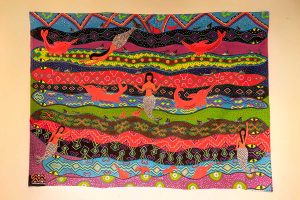The fashion industry is a dynamic and highly competitive sector where innovation and creativity are fundamental. To protect creations and prevent unauthorized use or counterfeiting, various legal tools exist within Fashion Law, particularly Industrial Property, which covers industrial designs and trademarks.
Industrial Design: Protection Against Copies and Unauthorized Use
Industrial design is a key resource for safeguarding innovations in fashion, such as garments, accessories, and patterns. This mechanism prevents third parties from copying or misappropriating a creation through timely registration.
When Should an Industrial Design Be Registered?
Since fashion is a constantly evolving sector, it is advisable to register designs at the sketch or digital mold stage, before they are manufactured or presented in fashion shows and exhibitions. This ensures their novelty, a key requirement according to Article 115 of Decision 486, which states that a design loses its novelty if it has been previously disclosed or commercialized.
Benefits of Registering an Industrial Design
Registering a design grants its creator exclusive rights over its use and reproduction, allowing them to:
- Prevent copies and unauthorized uses by third parties.
- Take legal action against those who attempt to register or commercialize the design without authorization.
- Protect investment in innovation within the fashion industry.
Examples of Protected Industrial Designs in Peru
Some companies and designers that have registered their creations in Peru include:
- AVINTIV SPECIALTY MATERIALS INC. (since 2017) – Textile ornamentation registration.
- DIADORA SPORT S.R.L. (Italy) (since 2015) – Sports footwear registration.
- RIMOWA GMBH (Germany) (since 2013) – Luggage design registration.
- YAOHONG TU (Peru) (since 2014) – Fashion design registration.
Trademark Registration in the Fashion Industry
Fashion designs can also be registered as trademarks, granting their owners exclusive rights of use and protection against counterfeiting or imitation. To be registrable, a trademark must be distinctive and not be confused with others in the same sector.
Examples of Fashion Designs Registered as Trademarks in Peru
- Saga Falabella S.A. (since 2008) – Protection of blouse design (Class 25: Clothing, footwear, and headwear).
- José Manuel Herrar Castillo (Peru) (since 2011) – Registered design in Class 25.
- Gianni Versace S.P.A. (since 2001) – Registration of the iconic Medusa design (Classes 18 and 25).
- Louis Vuitton (since 2006) – Registration of its flower design (Classes 18 and 25).
- Coach, Inc. (since 2012) – Protection of a design applied to handbags (Class 18).
Fashion Law: A Pillar for the Fashion Industry
Fashion Law provides legal tools that combine industrial design, trademarks, and copyrights, enabling designers and companies to effectively protect their creations. Depending on the type of product, it is possible to choose one legal strategy or another to ensure exclusivity and prevent unauthorized use by third parties.
In an industry where originality is key, having an adequate legal protection strategy is essential for the success and sustainability of any fashion brand.



